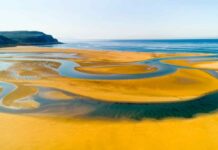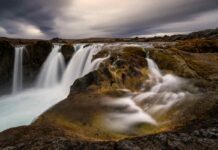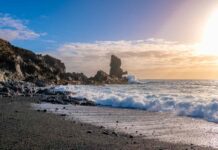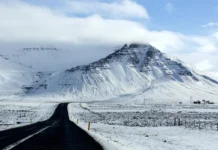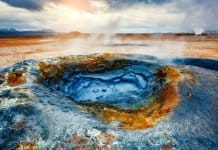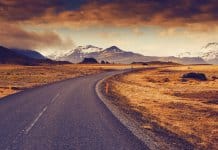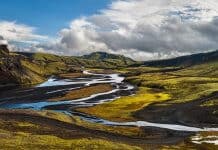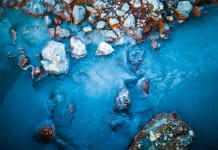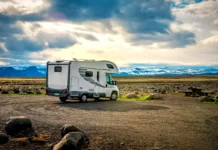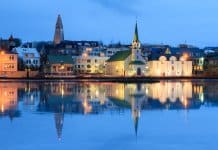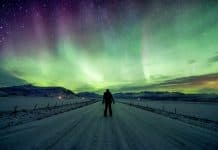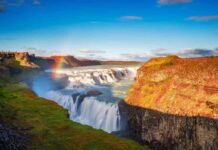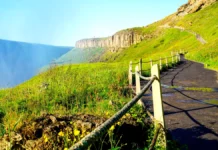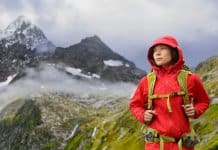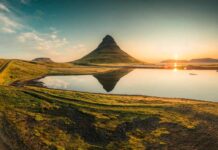You may have heard about all of the benefits and advantages of visiting Iceland during the low season. From low prices on car and campervan rental to an abundance of extraordinary outdoor activities, this is one of the best times of year to visit Iceland, and for good reason. So what is low season in Iceland? What are the months that are best for touring the island during this period? Whether you’re looking to go on a Northern Lights excursion or hike Skaftafell glacier in Vatnajökull National Park, you won’t be disappointed during your visit.

What is Low Season in Iceland?
Low season in Iceland is actually a combination of what’s considered shoulder season and off season. Unlike high season (June, July, and August), low season in Iceland sees a significant drop in the number of visitors. For all intents and purposes, off season is the winter (November, December, January, February, and March). Things are a bit dead at this time of year, and you’ll find that the tourists have really cleared out. Shoulder season is the transition between the bustling summer months and the relatively calm, quiet period known as off season. Technically, shoulder season consists of the fall months (September and October) and the spring months (April and May). Although I do want to note that there have been more people staying later into November and arriving sooner in March. This in effect extends shoulder season on either side and shortens the off season.
Benefits of Visiting During Iceland’s Low Season
One of the main benefits of traveling to Iceland during the off season is lower prices. Due to fewer tourists spending their time here, travel companies, tour operators, car rental agencies, and accommodation providers are all jostling for your business. They offer deep discounts of 30-50% on their services as a way to lure customers in. Take advantage of these low prices by booking your trip during the fall, winter, or spring.

As a side note, if you come during low season, another way to save money is to rent a campervan instead of staying in hotels. The daily rates for traveling with your home are much lower than renting a car and staying in a hotel. If you decide to go this route, be sure you check out this list of campsites that are open all year long. Unfortunately, you can’t just park anywhere and sleep overnight. The law changed a few years ago, and anyone camping in a camper needs to stay at a campground. So make sure you’ve got your bases covered and have a place to stay.
Best Outdoor Activities During Low Season in Iceland
The second main advantage of traveling to Iceland during shoulder season and off season is all of the cool outdoor pursuits at your fingertips. Iceland is not only a winter wonderland during this time of year, but it’s also an adventure lover’s dream. So what can you do in Iceland during low season?
Northern Lights – Iceland’s Dazzling Light Show in the Sky
Tourists who come to Iceland during the summer are missing out on one of the country’s most famous and most popular attractions: the Northern Lights. Undulating waves of turquoise and emerald dance across the night sky to mesmerizing effect. The cold, clear nights of this time of year make viewing conditions ideal for catching a glimpse of the Aurora Borealis.
Vatnajökull National Park – Glaciers Galore
While the summer months have lovely weather, the lack of cold temperatures means that the glaciers melt a little bit. The lack of structural stability creates unsafe conditions, so the country’s glaciers are off-limits for exploration. But when the reading on the mercury dips, the ice starts to freeze again. You can live the adventure of a lifetime by heading inside the glacier and marveling at the spectacular azure blue cavern of ice that surrounds you. Or maybe a frosty ice cave is more your speed? Trek through the tunnel to find your way out. For those looking to stay on the surface, glacier hikes are also another feasible outdoor option. If you had more of a high-speed adventure in mind, why not zip across the glacier on a snowmobile tour.
Dalvik – Iceland’s Skiing and Snowboarding Capital
Fans of freshly fallen powder will love visiting Dalvik in North Iceland. If you’re coming for a winter getaway, this ski zone and resort area will not disappoint. Lengthy pistes and high tech installations make this destination a favorite for both domestic and international ski vacations.
Into the Great Outdoors – Hike a Frozen Waterfall
Anyone who has visited Iceland in both the summer and the winter can tell you: it’s like two different countries. The lush, green landscapes and rolling hills give way to scenery blanketed in pristine, white snow. One of the more dramatic transformations is the country’s famous waterfalls. The gushing powerhouses of summer slowly freeze and turn into frozen icicles as they flow over the cliff edge. The water looks as if it were stopped in time, and it’s quite an elegant effect. Come explore cascades like Dettifoss and Kirkjufellsfoss to see the magical wonder.

What is Low Season in Iceland?
I have no doubt that if you come to Iceland during the low season, you will be happy that you did. Visiting from fall to spring gives you the chance to experience the Iceland that not many tourists get to enjoy. You get all of the advantages of off-season travel and will have a truly unique experience. Let us know your thoughts about Iceland outside of summertime.

